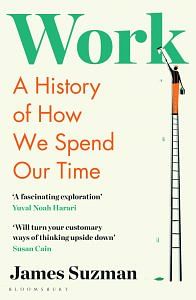In the two decades before the Great Recession in 2007, big companies everywhere were persuaded that to attract and retain ‘top talent’ they had to offer exorbitant pay packages.
It was the global consultancy firm McKinsey & Company who started the hysteria. In 1998, they introduced the word ‘talent’ to the ever-growing lexicon of corporate speak when they headlined one of their Quarterly briefings to clients and potential clients ‘The War for Talent’. These windy, slogan-ridden advertorials were designed to persuade businesses to spend hard cash on soft services they usually didn’t need. Most sat unread in executive inboxes or merited, at most, a casual scan in a washroom cubicle.
Aware of the short attention span of most of their readers, McKinsey peppered their briefings with eye-catching subheadings. On this particular advertorial, these would not have been out of place in dispatches from a journalist in a war zone.
‘There is a war on talent, and it will intensify,’ proclaimed one. ‘All are vulnerable,’ warned another.
Also Read: Google to McKinsey — The story of how ‘employee activism’ rose
Typically condescended to as junior partners by their peers in charge of ‘core’ corporate functions such as finance, supply chains and marketing, unloved and under-appreciated human resources directors in the world’s big companies found this briefing manna from heaven. It offered them something they could happily put in front of their colleagues, boards and CEOs that wouldn’t induce them to roll their eyes and yawn, because this briefing said the difference between good and bad companies was not the processes they followed or how efficient they were, but the clever people steering those businesses. Senior executives just like them.
The beating heart of the briefing was a graph, which McKinsey labelled ominously ‘Exhibit 1’. It indicated that some demographers associated with the United Nations guessed that in two years’ time the number of thirty-five to forty-four-year-olds in the United States would start to stabilise at some 15 per cent lower than its anticipated peak. In hindsight, this prediction was hokum. But the conclusions that they drew from it – that the boards of top businesses ought to be scrapping ruthlessly with one another to retain the talents of a handful of competent senior executives – was an outrageous stretch at best. It took no cognisance of trends in education, or the fact that every year more graduates and MBAs were entering the job market. Nor did it mention immigration, or that in the ever more globalised marketplace for senior executives, talent could be sourced from almost anywhere regardless of local demographic trends.
Also Read: Corporations must value their workers as much as they do their shareholders: Raghuram Rajan
To future historians, the ‘war for talent’ may appear to be one of the most elaborate corporate conspiracies of all time. Future economists might simply regard this as a market bubble as irrational and inevitable as any that came before or since. But others, who recognise that most of the rest of us are also suckers for flattery, may view it more sympathetically. After all, those who benefited from the surge in remuneration greatly appreciated the reassurance that they were worth every penny they were paid.

The team from McKinsey & Company who drafted the viral Quarterly sniffed another opportunity. They promptly transformed it into a resoundingly hollow but nevertheless top-selling business book, unsurprisingly enough also titled The War for Talent. Other big consultancy firms soon got in on the act and human resources managers everywhere watched their departments transform from dull administrative service providers into bells-and-whistles, make-or-break, core corporate functions that merited seats at the top table of the world’s great firms.
Also Read: Should corporates run banks? Pros & cons of RBI’s proposal on entry of private corporations
It did not take very long for some observers to declare the talent narrative to be nonsense. Jeffrey Pfeffer, Professor of Organizational Behavior at Stanford’s Graduate School of Business, published an article called ‘Fighting the war for talent is hazardous to your organization’s health’. In it he made the seemingly obvious point that businesses succeed because they are collaborative, and that overvaluing individuals was likely to create a corrosive culture. Soon afterwards, in a 2002 issue of the New Yorker, Malcolm Gladwell delivered an eviscerating critique on what he dubbed ‘The Myth of Talent’. He took the view that the whole thing had been kicked off by overpaid McKinsey executives buying into the myth of their own brilliance.
As persuasive as they were, Pfeffer’s and Gladwell’s protests were drowned out by the sounds of tills ringing as stock markets and commodity prices surged everywhere. This, however, had very little to do with the ‘top talent’. Rather it was made possible by a billion new customers in South East Asia embracing consumerism, and because, in the United States and Europe, recently deregulated and rapidly expanding banks had persuaded themselves and governments that the clever algorithms they used to fragment and then bury rotten assets had finally brought an end to ‘boom and bust economics’ – the cycle of collapses and recessions that punctuated the upward trajectory of economic growth over the course of the twentieth century.
 This excerpt from ‘Work: A History of How We Spend Our Time’ by James Suzman has been published with permission from Bloomsbury India.
This excerpt from ‘Work: A History of How We Spend Our Time’ by James Suzman has been published with permission from Bloomsbury India.



